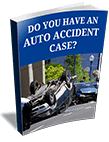How Much Money Can I Get From a Car Accident?
Medical bills. Vehicle repairs. Lost wages. There seems to be a never ending pile of bills and expenses associated with a serious car accident. And often, you’re given a quick low-ball settlement offer from the insurance company, leaving you to wonder if you should just accept the first offer so that you don’t drag the process out any longer.
If you feel as though the settlement you are being offered is not adequate to cover your expenses, you would certainly not be alone. Insurance companies are notorious for offering low-ball settlements. Luckily, you can always reach out to a skilled NJ personal injury lawyer to get a better idea of what sort of settlement is realistic for your unique situation. But just how much money can you actually get from a car accident?
Types of Damages
Insurance companies typically sort damages into two categories: Economic damages or Non Economic damages. When you add these two categories, you can typically get a good idea of what your settlement amount should be.
Economic damages are the most straightforward and simple to calculate. For these, you’ll be collecting every receipt that is associated with your accident and totalling the amounts. These can be things like:
- Current medical bills
- Future medical bills
- Lost wages
- Vehicle repair bills
How much these will add up to will of course depend on the severity of your accident. A simple fender bender will probably just require one or two doctors visits to assess for whiplash or other head and neck injuries, and your vehicle may require little in the way of repairs. A more serious accident may leave you permanently disabled, necessitating changes in your job or costly accommodations in your home.
Non Economic Damages
Non economic damages are much more difficult to calculate. These are damages that you may have due to the pain and suffering your accident caused – things that don’t necessarily always come with a handy receipt.
Non economic damages include things like:
- The impact of the accident on your life
- Permanent disabilities or injuries
- Psychological suffering
- Wrongful death
How To Calculate Pain and Suffering Damages
Putting a price tag on your pain and suffering is never a simple task. One way to help you understand how your car accident has affected your life is to keep a log of the impact the car accident has had on your ability to pursue everyday activities. If your injuries have left you unable to take care of household responsibilities or take part in hobbies you enjoy, keep track of this. Of course, the best way to get an accurate picture of what your pain and suffering damages should be is to speak with a skilled car accident attorney, who can take a look at your specific situation.
Insurance Coverage and Pain and Suffering
In New Jersey, drivers can choose between “basic” or “standard” insurance policies, which are known respectively as “limited” or “full” tort coverage in Pennsylvania. Standard coverage, or full tort, gives you an unlimited right to sue the at fault driver after an accident for your pain and suffering damages.
If you have basic or limited coverage, you may only be able to sue for pain and suffering if you have what is classified as a “serious” injury. The definition of a serious injury varies from state to state. If you have basic or limited coverage, an experienced New Jersey car accident attorney can help you explore your options and determine if you are still able to bring a pain and suffering claim if your injuries do not meet the threshold for a “serious” injury in your state.
How To Get an Accurate Estimate of Your Settlement Amount After a Car Accident
To get a very rough estimate of what your settlement might ultimately be, add up your medical bills, lost wages, and vehicle repair bills. Multiply this sum by three to account for pain and suffering, and you should have a rough idea of what your settlement amount will end up looking like. If your damages add up to more than the other driver’s insurance policy, you will likely need to sue the driver for the remaining damages owed.

